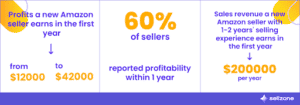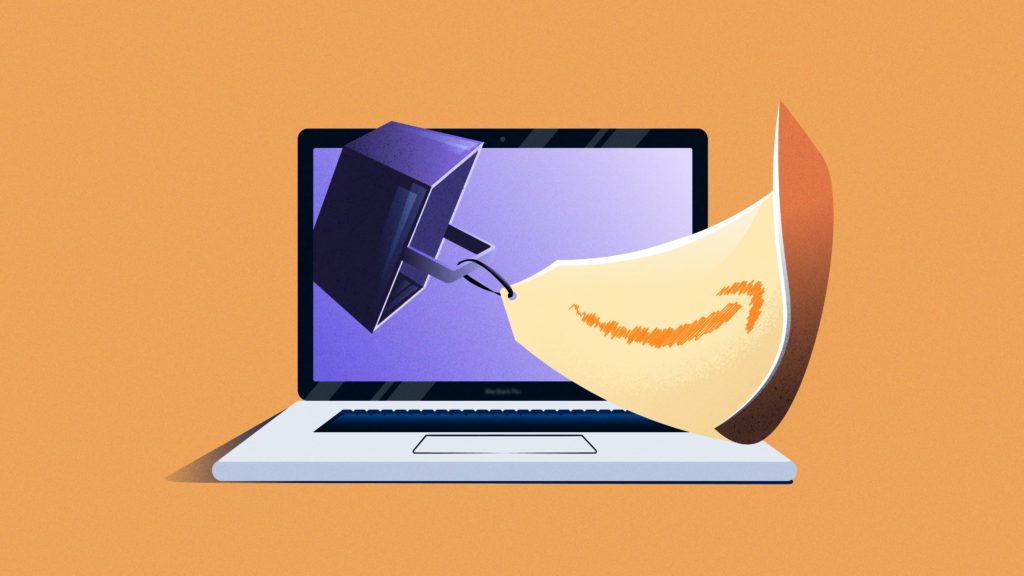Amazon’s exponential growth and reach make it a popular channel for most e-commerce sellers. With a net annual revenue greater than USD 350 billion, it is undoubtedly the largest online retail space in the world. More and more brands of all sizes continue to join the Amazon ecosystem, irrespective of the challenges that selling on the platform brings. 2022 e-commerce trends indicate that more Direct to Customer (DTC) sellers will join Amazon over the coming year, especially since Amazon has launched several new features that make it more convenient for new brands to join the platform.
Amazon’s huge traffic and potential sales could be the lucky strike for your e-commerce business in 2022. But navigating the platform does include a steep learning curve. Many brands, even established ones, struggle to profit on the platform because of inadequate preparation.
You don’t want to make costly beginner mistakes that can eat it into your profit margins. Here are five things to watch out for if you plan to expand your e-commerce business to Amazon in the new year (and read our guide on eCommerce optimization to know if you should consider Amazon or focus on your own store instead)!
You may be surprised to discover that some (or even all) of your products might already be selling on Amazon by third-party resellers. If this is the case, the first thing you need to do is check the quality of your product listings. If your brand and pricing are where you want it to be, you may decide to let your resellers handle the details of selling on Amazon.
However, if you are not happy with the listing, pricing, or reviews, it may be time to regain control of your brand on Amazon. You can start by registering your brand on Brand Registry to regain control of your listing. After that, you will have to contact Amazon support to resolve the issue.
Of course, if your products are not currently on the channel, you get an opportunity for a fresh start and can create the product listing from scratch.
Once you have control of your product listings, you will need to crunch the numbers to make sure you profit when selling on the platform. You can use tools like the FBA revenue calculator to work out profit margins. It is important to remember that Amazon fees can be complicated. For instance, you may have heard, anecdotally, that Amazon charges about one-third of your selling price in fees. While that is sometimes the case, the actual fees can range from 10%-100%, depending on several factors. We give a breakdown of some of the fees below:
Seller plan
The seller plan is a fixed monthly fee if you expect to sell more than 40 items a month. Otherwise, you pay approximately $1 per item sold.
Referral fees
Amazon charges per unit referral fees for all products sold on the platform. These fees are tiered based on your product category and package size.
Fulfillment fees
Amazon also charges a per-unit fulfillment fee if they are shipping, storing, packing your products. There is no cost if you are managing fulfillment yourself.
Marketing fees
There are additional fees you may choose to pay from time to time to increase your sales on the platform. These include advertising costs and additional features like customer service by Amazon.
Closing fees
Sellers also pay a closing fee of $1.80 per item that is sold in the categories of Books, DVD, Music, Software & Computer/Video Games, Video Game Consoles, and Video Game Accessories.

If you are currently used to managing your own logistics and fulfillment, you might be thinking of extending this to your Amazon orders as well. On Amazon, fulfilling your own orders is called FBM (Fulfilled by Merchant). While this seems straightforward, the reality is that fulfilling your own orders can seriously limit your success on the platform. Amazon prioritizes FBA (Fulfilled by Amazon) products in all their promotional campaigns. FBA products are also highlighted to Amazon’s million-strong subscriber base so that customers generally prefer FBA over FBM.
How FBA works
If you want to profit on the platform, you are better off learning how FBA works. To qualify for FBA, you need to package your products according to Amazon specifications and ship them to Amazon’s warehouse. Amazon will then ship the products directly to your customers when they purchase the product. Amazon guarantees same-day delivery, free shipping, and other perks that improve customer satisfaction and loyalty by controlling shipping in this manner.
FBA fees
If you choose FBA, you will incur per unit fulfillment fees and additional charges like
- Monthly inventory storage fee for all items stored in an Amazon fulfillment center based on the calendar month and the daily average volume of your inventory.
- Long-term storage fee for inventory in the Amazon fulfillment centers and has not sold for over a year.
- Removal order fees if you want Amazon to return or dispose of your inventory in the Amazon warehouse
- Returns processing fee for orders for which Amazon offers free return shipping.
Every day millions of website visitors search Amazon for specific keywords for items they want to purchase. Before you start selling on Amazon, you can analyze these search terms to gauge the interest and demand for your product. You can use a search volume analyzer like Sellzone Amazon Keyword Wizard Tool to get an estimate of the potential of your product on the platform. You can also use the tool to identify keywords that you can target in your product listing and for advertising.
Outselling the competition
If you want your products to rank on the first page of search results, you will also need some organic rankings. Similar to Google, Amazon uses several different criteria to rank products higher in search results. One of the main criteria is sales volume. You typically need to outsell your competition for your products to rank organically.
High-demand categories often have greater competition. Established sellers with older listings may already have a large number of reviews and an established customer base. You will have to work hard in the beginning to get those initial sales. It is a good idea to target high-demand, low-competition keywords while you establish your Amazon presence.
Buy box listing suppression
If you have some big-box retailers or other large companies as competition, they may undercut you in prices, resulting in the buy box suppression on your listing page.
When the buy box is suppressed you will not be able to run Sponsored Products Ads for that product and you will likely see a significant drop in your conversion rate (unit session %).
While BB suppression can happen for a variety of reasons the two most common are that:
- Price is significantly higher than 30-day average
- Amazon found significantly lower price off Amazon
Advertising on Amazon is very different from Google advertising because it is the bottom of the funnel of search advertising. People are ready to buy, and the advertising system is geared towards getting them to make an immediate purchase once they click on the ad. To be successful with Amazon ads, you will need to:
- Take the time to learn how Amazon ads work.
- Set them up to target a whole range of keywords, so your products show up for different search terms.
- Optimize ad performance to improve results and get more return on your PPC spend.
Sellzone’s PPC optimizer tool helps you to automatically launch and direct the most profitable ads. You can save time on your PPC campaign set up and analyze campaign performance with detailed reports.
2023 is a great year to ensure your business is present on more channels along with your website. If you are planning to launch your business on Amazon bear in mind that all your products might not be successful on the platform, irrespective of how they perform on other channels. We recommend that you do your due diligence and learn how the platform works before launching. Learning as you go could prove to be costly. Prior research might even lead you to re-package and rebrand your product line to make the most profit from Amazon!
2022 is a great year to ensure your business is present on more channels along with your website. If you are planning to launch your business on Amazon bear in mind that all your products might not be successful on the platform, irrespective of how they perform on other channels. We recommend that you do your due diligence and learn how the platform works before launching. Learning as you go could prove to be costly. Prior research might even lead you to re-package and rebrand your product line to make the most profit from Amazon!
Interested in knowing more? We recommend you read the Sellzone Blog on common FAQs about selling on Amazon. We have used statistics and data-backed research to answer some common Amazon e-commerce queries!

